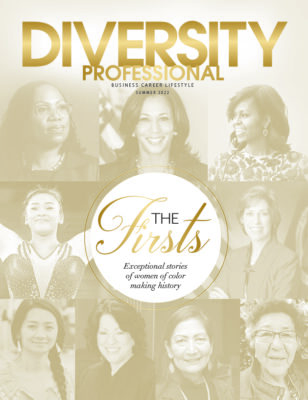BEYOND MANAGING PEOPLE: LEADERSHIP SKILLS THAT PROPEL
Three essential skills for leadership success in today’s work environment.
Budget or no budget, propelling leaders, and especially middle managers to go from mindset to movement in building an inclusive, equitable, sustainable culture is the subject of today’s work environment. With stress, fatigue, and distractions on the rise, well-being has become one of the main considerations in the employee experience. Add the social and political unrest and economic uncertainty we have experienced, and we find that employees have already merged the personal and professional conversations and will do so well into the future. These three skills have rapidly claimed their place in leadership circles:
Facilitating
There is a big difference between managing, running meetings and facilitating. Facilitation skills do not come naturally to most people. This year, I have had the most requests for coaching leaders to be better facilitators. Even the managers who are great growth partners and coaches themselves, struggle with difficult conversations about race, gender, religion, sexual orientation, or any salient identities, especially in a virtual meeting. They might not set conversation boundaries, notice who gets interrupted or who is taking up too much airtime on the platform and in the chat. They might not recognize slights and snubs, jokes with hidden messages of bias, and how to create space for themselves and others to call in or call out such behaviors. Such an environment can deeply impact a person’s sense of belonging, and many managers miss that point.
To call in, is to dig deeper into what is driving or being implied by a statement, usually privately with the person who made the statement. Virtual platforms have made this more immediately accessible, but it is a delicate choice of words. To call out, is to pause the statement and set boundaries that the behavior will not be tolerated, usually on the spot in front of others or through others. Recognizing hierarchy, cultural dynamics, and individual preferences in a group are essential to foster a mindset and behavior shift in that person.
Managers need to be equipped with the capability to
■ Ask the right questions
■ Use validating language
■ Summarize back for clarity
■ Build consensus and draw in collective participation in setting team culture
■ Keep people energized and focused for a long time
Most management trainings have ignored facilitation skills, but with collaboration technology platforms allowing rudeness to creep in, these skills, practiced inclusively, are now a must.
Adapting to Context
A deep understanding of what drives behaviors and emotions of employees is vital to build stronger relationships with them. Emotional intelligence can help with that. However, when leaders are thrown into unfamiliar environments, where they feel the impact, physically and emotionally of all the differences around them, this is where other intelligences are needed, such as cultural intelligence (the capability to work effectively in a multicultural setting).
Training leaders to embrace and derive joy from encountering difference is especially needed right now. Training leaders to see the benefits of difference and to feel the confidence that they can navigate new situations is the motivation capability in cultural intelligence. It is one of the most difficult to improve. Recognizing cultural similarities and differences, having a framework to plan for interactions, learning to pause judgment, adjusting communication and behaviors appropriately to various contexts, and doing all those well, could lead leaders to feel more confident about working with those who are different than them. With diversity and equity being top of mind, leaders need the skills and grit to engage new contexts, and cultural intelligence development is key.
Energizing Purpose
Leaders need to understand their own purpose to demonstrate how their work ties to their organization’s objectives. How you share your own values, mission, and vision as a leader is a powerful connection tool to others and a window into where you really need to be. Ask yourself the following questions:
■ What do I do well in this role (like it or not)?
■ What are my favorite tasks and activities in this role?
■ What have I learned doing this role, which I did not know before?
■ What are the skills with which I struggle and that I want to improve in doing this role?
I call this type of reflection ‘Rockin’ Role Exercise’. It surfaces a leader’s approach to leadership and if they are in their element in the role they are doing. Then the ‘All I Do is Purpose Exercise’ can follow, on developing and sharing a vision statement. It is a way for a leader to signal what matters most to them, and the impact they would like to make in their life and their team’s lives.
Start with three lists: one of values you are holding, one of actions you like doing, and one of outcomes you like seeing. Combine all those into a few sentences, and you have written your vision statement. Share it, let it drive your decisions, and energize your team to do the same for themselves. Conversations around one’s goals would be guided by this statement, so all work tasks embody it, within one’s own larger life context.
Employees expect their leaders to show empathy, to recognize that they are a whole person, with dreams, hopes, and nonnegotiables. Leaders need to themselves act that way first.
These three sets of skills may have not been considered as part of the job requirements when a leader was first onboarded, but they might make or break a leader now, and well into the future.









